What Fuels the Astana Ballet of the Republic of Kazakhstan’s LA Performance November 22
 (Gerry Furth-Sides, photo courtesy of the Astana Ballet Theatre) Astana Ballet Theatre Group, one of the top performance theater companies of the Republic of Kazakhstan will premiere on the West Coast, featuring a world class and diverse repertoire. Though a flowy back curtain is the entire set on tour, compared to the state of the art technical one in Kazakhstan, it shows off the bold, fluid virtuosity of the dancers. It is all the more remarkable that the females modern ballet dancers are often on point as naturally as if they were barefoot .
(Gerry Furth-Sides, photo courtesy of the Astana Ballet Theatre) Astana Ballet Theatre Group, one of the top performance theater companies of the Republic of Kazakhstan will premiere on the West Coast, featuring a world class and diverse repertoire. Though a flowy back curtain is the entire set on tour, compared to the state of the art technical one in Kazakhstan, it shows off the bold, fluid virtuosity of the dancers. It is all the more remarkable that the females modern ballet dancers are often on point as naturally as if they were barefoot .
The program includes classic and modern dance as well as original compositions by renowned choreographers, including Astana Ballet’s newest presentation: MASTERPIECES. The Astana Ballet Theater has toured all over the world with performances in Paris, Beijing, Vienna, Budapest, Tokyo, Brussels and last year’s performance at the Lincoln Center in New York City.
 The heart-stopping The Heritage of the Great Steppe Kazakh folk dance, full of thunderous music and pounding artistic imagery is alone worth the price of admission (see below). A more regal, earthy segment is danced by female dancers (above).
The heart-stopping The Heritage of the Great Steppe Kazakh folk dance, full of thunderous music and pounding artistic imagery is alone worth the price of admission (see below). A more regal, earthy segment is danced by female dancers (above).
Also will be three neoclassical one-act ballets, which include two pieces by Brazilian choreographer Ricardo Amarante: Love Fear Loss, a ballet set to songs by Edith Piaf that focuses on Piaf’s remarkable life story; and A Fuego Lento, a ballet that uses the rhythms of a Samba and Tango to tell a passionate story about the flush of first love. The very different, often extreme undulating movements of the dancers that seem to be a signature of this tour, compared to the much more rigid, straight lines of the tango dance make for an exhilarating experience!
The final one-act , Love’s Lost Idols, is by the renowned New York-based choreographer Nicolo Fonte, who is known for his daring and original approach to dance.
Astana Ballet Theater is named after the country’s capital city. It reflects the described as having building that “rise up implausibly from the flat plains of oil-rich Kazakhstan to form a city stuck between a Soviet past and an aspirational present. Founded in 2012 on the initiative of the Head of State Nursultan Nazarbayev, the first performance of the Theater took place in July 2013. Audiences fell in love immediately. Today the team’s thousands of fans can be found not only in Kazakhstan, but also abroad.
The latest technologies of mobile and lifting-lowering mechanics are used for scene transformation. The lighting complex includes traditional theatrical devices and systems, as well as the latest innovative developments in this field. The possibilities of the scene of “Astana Ballet” Theater open up space for embodiment of the most daring and original ideas for producers and stage designers. For more information and to book tickets to the CA West Coast tour please visit: //astanaballetusatour.com
For the first time EVER, the esteemed company will be making their West Coast debut in California with their first tour stop hitting San Francisco before traveling to Los Angeles and San Diego/Escondido. For tickets, see: www.EventTicketBoss.com. Astana Ballet’s west coast performances took place San Francisco at the Herbst Theater, in San Diego at the Spreckels Theatre, at the California Center for the Arts in Escondido and plus Los Angeles performance on Nov. 22 at the Saban Theater. All performances start at 7:30 p.m.
Given little is known about Kazakhstan, the dance group is a marvelous window into the culture and arts of this country.
And what would we be eating if we were to be in Kazakhstan dining before a performance? Foods for high energy and a lot of movement – unlike the “calorie crazy” with anything starchy former Cirque du Soleil troupe’s former diet and their much more trendy, vegetarian based current one.
Kazakh cuisine is traditionally is focused on mutton (sheep) and horse meat, plus milk products. For hundreds of years, Kazakhs were herders who raised fat-tailed sheep, Bactrian camels, and horses, relying on these animals for transportation, clothing, and food. The nomadic way of list has influenced cooking techniques and major ingredients, with one outstanding one being preservation that include salting and drying meat, along with a preference for sour milk. Meat in various forms, and primarily boiled, then served in large pieces, is traditional. Kazakhs cared so much for their horses, especially for horses which they intended to slaughter, they are known to keep them apart from other animals and feed them so much they had difficulty moving—keeping them separate from other animals and feeding them so much that they often became so fat they had difficulty moving.
Checking through lists it seems that most agree on these top ten. All reflect the nomadic lifestyle and the requirement of food for a lot of energy because of the climate. Meat is dominant; vegetarianism just about non-existent. Some dishes may appear extraordinary or even strange, but everything is worth trying at least once.
1. Beshbarmak: The national dish consists of boiled horse meat or mutton with large noodles and onions. Traditionally beshbarmak is served on a common platter and eaten with fingers and the name translates to “five fingers”). Similar to Indian custom, the family and guests sit on the floor around a low-lying table called dastarkhan.
2. Kazy The meat of this traditional sausage made from the rib meat of horses is stuffed inside the animal’s intestines and then usually dried or smoked before it is boiled for consumption. Kazy is an important part of any celebratory meal.
3. Kuyrdak Kuyrdak is a national dish made from cow’s, horse’s or sheep’s chopped heart, liver, kidneys boiled in oil, and served with onion and pepper.
4. Sorpa Sorpa is a traditional hot broth usually drunk after eating beshbarmak. This is often served with Kurt, a type of cheese made from dehydrated sour cream by forming small balls and letting it dry. Kurt was historically useful for long treks on horseback across the steppe.
Airan is an almost liquid yogurt prepared from fermented cow’s milk.
Known for it’s delicious flavor, Kumys, a dairy product made from mare’s milk often fermented in big skin bags for as many as several days has alcohol content. Shubat Shubat is camel’s milk made in the same way as kumys, and both are known to have wonderful health properties.
Baursaks, the popularKazakh national dish for celebratory occasions made from spherical or triangular pieces of dough and fried in oil can be prepared sweet or not. Sometimes it is described as a type of Asian doughnuts. The smell of the oil and the frying baursak floats high into the sky so that your dead loved ones can feed on the aroma and enjoy them with you. Shelpek Shelpek is a flat cake made in the same way as baursaks.




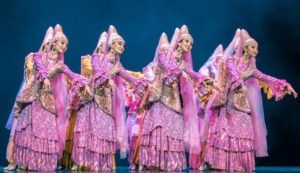
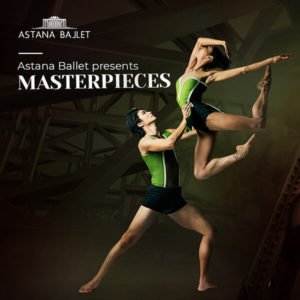
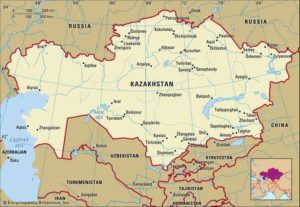
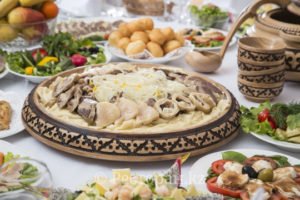
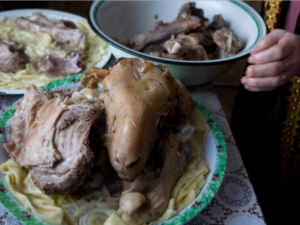
 Gerry Furth-Sides
Gerry Furth-Sides  Barbara Hansen
Barbara Hansen  Chef-owner Alain Cohen
Chef-owner Alain Cohen  Roberta Deen
Roberta Deen  Jose Martinez
Jose Martinez  Nivedita Basu
Nivedita Basu